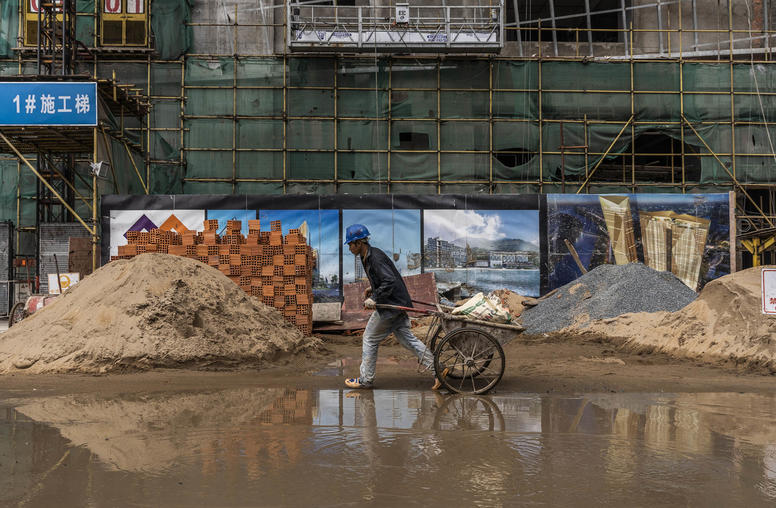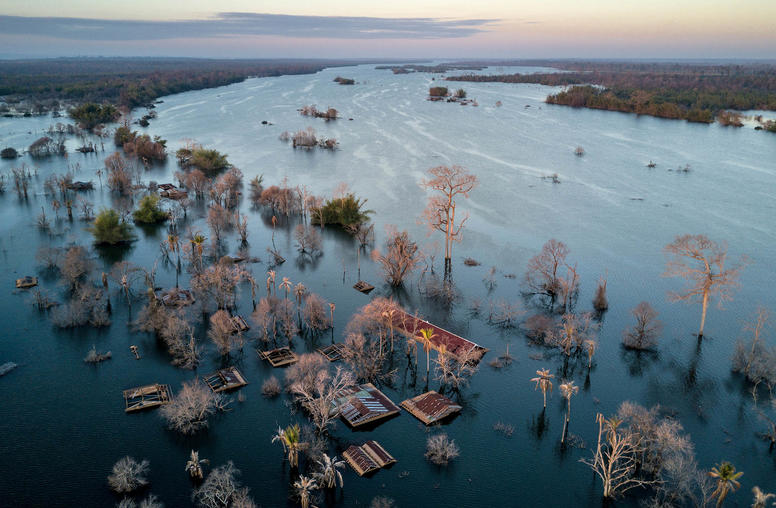Thai-Cambodian Crisis over Preah Vihear
Amid tensions between Thailand and Cambodia along their shared border, USIP Senior Fellow Philippe Peycam gives an overview of the role of heritage sites and historical memory in the conflict.
April 27, 2011
Amid tensions between Thailand and Cambodia along their shared border, USIP Senior Fellow Philippe Peycam gives an overview of the role of heritage sites and historical memory in the conflict.
- Over the last week or so fighting has broken out between Thailand and Cambodia around a group of temples on the border between the two countries. How do the temples of Preah Vihear, Ta Moan and Ta Krabey relate to this conflict—can you give us an overview?
- What is the international accepted view of the legal jurisdiction of the temples? Is there really a conflict over which country they belong to?
- Why are these temples so important to each country—are they equally important to the leadership of Thailand and Cambodia, and also to the people of each of the two countries? Is this a question mainly of history, or contemporary politics, or both?
Over the last week or so fighting has broken out between Thailand and Cambodia around a group of temples on the border between the two countries. How do the temples of Preah Vihear, Ta Moan and Ta Krabey relate to this conflict—can you give us an overview?
There is a long history behind this crisis over these three 11th century Hindu temples, all of which lie in a region contested by the two countries. The importance of these temples, especially Preah Vihear, considered one of the masterpieces of Khmer architecture, for both countries stems from the ancient heritage of the Khmer empire, to which both states lay claim, to some degree, for their cultural ancestry. This question of “Angkorian” linkage was reinforced during the French protectorate over Cambodia in 1907, with the “return” of the ancient temple complex of Angkor Wat to (French) Cambodian territory. Angkor Wat is now Cambodia’s national symbol and is prominently displayed on the flag of all succeeding regimes since independence—but, for example, Thai King Mongkut (Rama IV) built a model of Angkor Wat in the Grand Palace complex in Bangkok, a sign of how important certain Khmer temple complexes have been in the minds of Thai elites as well over the centuries.
This crisis reveals the extent to which cultural heritage and historical memory, when framed by nation states can be as divisive as ethnic, social or religious differences or access of natural resources.
What is the international accepted view of the legal jurisdiction of the temples? Is there really a conflict over which country they belong to?
As Thai historian Thonchai Winichakul emphasized, the idea that a modern nation-state should be spatially bounded by geographical borders was imported from Europe. In the case of Preah Vihear temple, the problem dates back from 1904 when the French authorities controlling Cambodia drew the current border line along the Dangrek mountain range watershed, which should have left the temple on the Thai side, but nonetheless they ensured that the temple was within Cambodian territory. At that time, the Thai authorities did not pay much attention.
This attitude changed in the following years. In 1940, the Thai government took advantage of France’s weakened position after her defeat to Germany to “take back” Preah Vihear. Following the withdrawal of French troops from Cambodia in 1954, Thai forces again occupied the temple to enforce their claim. The newly independent Cambodia succeeded in having the International Court of Justice [ICJ] rule that the temple and the surrounding land lay in Cambodian territory (The Hague, 1962). The international accepted view of the legal jurisdiction of the temples is therefore clearly in Cambodia’s favor. If the case has been legally cleared, it has remained a volatile political issue in both countries ever since. Diplomatic relations were severed a number of times, and threats of force were voiced by both governments.
Why are these temples so important to each country—are they equally important to the leadership of Thailand and Cambodia, and also to the people of each of the two countries? Is this a question mainly of history, or contemporary politics, or both?
On July 7, 2008, Preah Vihear was listed as a UNESCO World Heritage Site, a move that outraged nationalists in Thailand. A number of incidents have occurred since, including last February, when eleven people were killed in skirmishes between the two sides.
This brings us to the fighting in the past few days in which at least twelve soldiers have been killed and up to 50,000 people living in the area evacuated. What is happening now is clearly the result of internal Thai political divisions. The current Abhisit Vejjajiva Government appears to be under pressure from ultra-nationalist elements among its “Yellow Shirts” supporters together with members of the army leadership who may be tempted to push for an international crisis with Cambodia over the Preah Vihear issue. That would prompt the cancelation of the general elections scheduled to take place in June or July which they are thought likely to lose to the pro-ex Prime Minister Shinawat Thaksin “Red Shirt” movement. Thailand’s refusal to let Indonesian military observers step in as a third party dispatched by the Association of Southeast Asian Nations [ASEAN] is an indication that the Thai military hierarchy wants to keep the situation under its exclusive control.
There is another political aspect to the crisis: on the Cambodian side, it is clearly reinforcing the position of Prime Minister Hun Sen, 60, the strongman of Cambodia since at least 1997. As a way to consolidate his power, Hun Sen is exploiting the situation by stirring up anti-Thai feelings among his population. One of his recent moves was to have his son, West Point graduate Major General Hun Manet, appointed as commander of the troops overseeing the Preah Vihear situation.
In addition, Hun Sen, who is certainly mindful of the stream of popular uprisings in the Middle East, is having his government prepare a new law that will force associations and non−governmental organizations to undergo an onerous and opaque registration process, a move meant to rein in an increasingly active civil society in the country’s big cities.
This power consolidation process is taking place at a time when the Cambodian leadership, in spite of its high level of corruption, continues to receive aid and investments from a number of countries including Korea and China while maintaining close relations with neighboring Vietnam. More perhaps than Indonesia or the United States, China is the country that could best persuade both the Thai and Cambodian authorities to stop escalating their current dispute into a major conflict.



